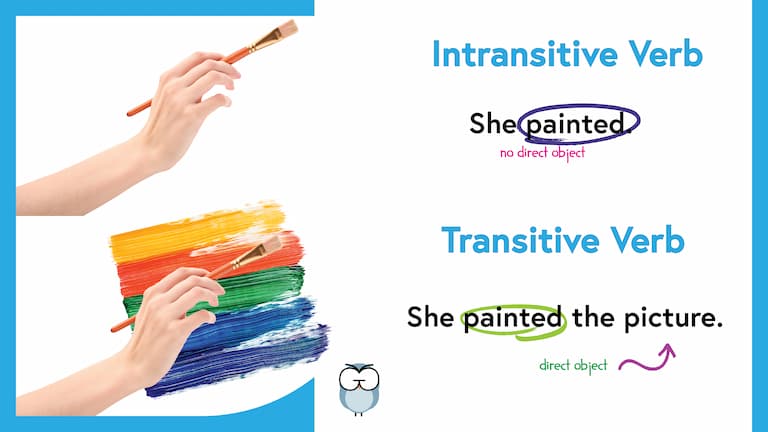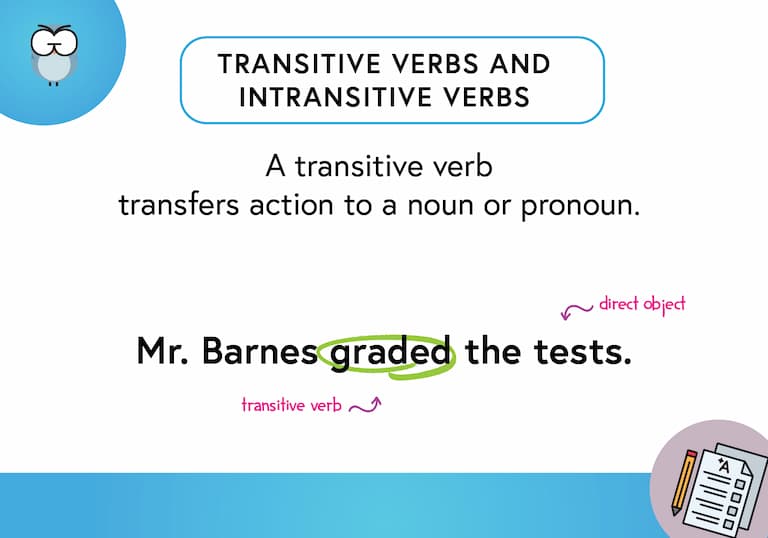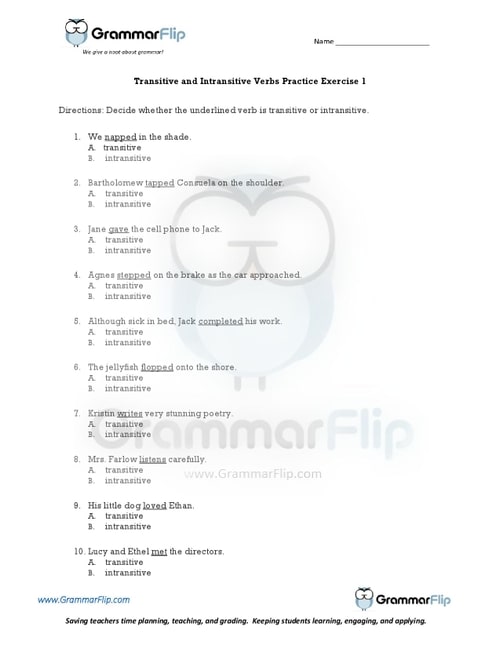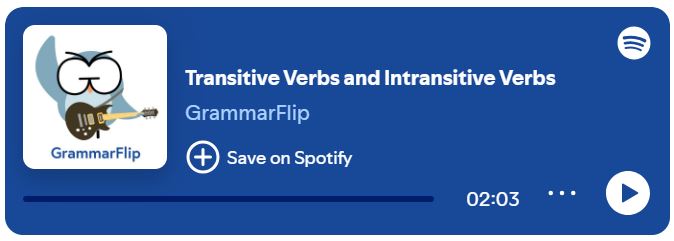What is a Transitive Verb?
A transitive verb is a type of verb that transfers action to a noun or pronoun.
Some examples of transitive verbs would be the following:
Mr. Barnes graded the tests last night. (“graded” = transitive verb, “tests” = object receiving action of the verb)
The veteran accepted the award. (“accepted” = transitive verb, “award” = object receiving action of the verb)
A nail punctured the tire of Alicia’s car. (“punctured” = transitive verb, “tire” = object receiving action of the verb
Henry tossed the pizza in the air. (“tossed” = transitive verb, “pizza” = object receiving action of the verb)
Long-Form Videos: Transitive Verbs
Long-form instructional video lessons allow students to engage with grammar concepts in more depth and detail.
This format provides students with a stronger foundation and a more comprehensive understanding of transitive verbs.
Grammar-in-Context Videos: Transitive Verbs
GrammarFlip’s grammar-in-context videos provide an additional layer of instruction, learning, and relatability.
Our unique and memorable video footage helps solidify the understanding of challenging grammar concepts.
Watch this video to better understand transitive verbs!
Short-Form Videos: Transitive Verbs
Short-form videos are an excellent way to review grammar concepts. Our two-minute instructional videos help students review the concept of transitive verbs to further solidify their understanding.
Memorable Images: Transitive Verbs
The use of images to connect visual cues with concepts makes it simpler for students to grasp and remember key ideas. GrammarFlip’s memorable images create visual associations that make transitive verbs more engaging and easier to retain.

Definition Cards: Transitive Verbs

Definition cards reinforce grammar concepts by providing clear and concise explanations that students can easily reference for quick review and better retention. GrammarFlip’s definintion cards help students review the concept of transitive verbs to further solidify their understanding.
Music: Transitive Verbs
Learn grammar concepts through music! The unique verses and catchy chorus in our “Transitive Verbs and Intransitive Verbs Song” will help your students further understand transitive verbs. Listen for yourself and see if you don’t walk away singing this song to yourself!
Listen to GrammarFlip Music via Spotify, Apple, or Amazon!
Music Videos: Transitive Verbs
Music videos make grammar concepts more engaging and memorable by combining rhythm, visuals, and repetition to reinforce learning. GrammarFlip’s music videos help students retain the concept of transitive verbs more effectively while making the learning process fun and interactive.
Why You Should Use Transitive Verbs in Your Writing
Clarity and precision are the two primary reasons for using transitive verbs in your writing. Keep in mind that transitive verbs require a direct object (because transitive verbs transfer action to something), and by including a direct object in your sentence, you’re providing more detail and thus more clarity and precision to your writing.
Using an intransitive verb: At the party, Sheila ate.
Using a transitive verb: At the party, Sheila ate cupcakes.
Notice the difference between the two? The first sentence uses what we call an intransitive verb (a verb that does not transfer action) while the second sentence uses a transitive verb. Even though they are the same word “ate,” one is functioning as a transitive verb while the other is functioning as an intransitive verb.
Using transitive verbs in your writing provides the additional clarity and precision that readers want.
Download a Free Worksheet on Transitive Verbs!
Click the image below to download your free worksheet on transitive verbs!

Do your students understand the difference between transitive and intransitive verbs?
Explore More GrammarFlip Lessons!
Parts of Speech lessons provide the building blocks of grammar. GrammarFlip covers these topics in detail to ensure a solid foundation is built. First time learners and students seeking to review the parts of speech can both benefit from the instructional videos and slide show reviews.
Parts of the Sentence lessons are critical for understanding how the parts of speech function in language construction. From the basic to the advanced, these lessons will cover a wide range of grammar topics that can be used in any grade level or classroom.
Mechanics and Usage lessons equip students with the necessary skills to communicate clearly to all audiences. With a focus on the application of these concepts in student writing, these lessons tie together both simple constructions of grammar as well as the more complex such that any age or skill level of student will benefit.


